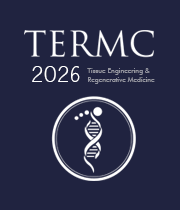Title : Advanced roll porous scaffold 3D bioprinting technology
Abstract:
Improvements in the Roll Porous Scaffold 3D bioproduction technology will increase print density of 10−15 µm cells by ~20% up to ~1.5×10^8 cells/mL and clarity by >10%. The analogues of the proposed solution are only indirect, much more expensive and less technologically advanced. Now in 3D bioprinting, biodegradable collagen and gelatin hydrogels are usually used as a scaffold to keep cells at a given point in space from leaking away or nanofibers. When printing a large organoid in a gel, it tends to spread, the collagen does not have time to solidify, and to maintain the shape of the organoid during solidification, acoustic or magnetic waves are used, which greatly complicates the design of the printer. Nanofiber substrates, which take a long time to produce on high-voltage equipment using the electrospinning method, allow them to retain their shape, but are used mainly for the production of fragments of non-branching vessels, pieces of cartilage, connective, muscle and even nervous tissue. The porous bioresorbable scaffold for Roll Porous Scaffold technology is designed to solve the problems of precise placement, leakage and increase in the number of cell types immediately used in one printer and by orders of magnitude exceed all currently dominant 3D bioprinting methods in speed, volume, and printing density without using expensive equipment and components.
Audience Take Away Notes:
- The upgrade of the Roll Porous Scaffold is designed to 1) Simplify parallel testing of new substances not on animals, but using generated 3D “organ on a chip” biomodels, 2) Personalized medicine with simultaneous testing of multiple treatment methods and drugs, targeted therapy for a specific patient in vitro on the 3D composition of his personal cells and selection of the most effective with low toxicity, 3) Overcoming the shortage of organs for implantation and personal hormone replacement therapy for everyone using printed endocrine glands from their cells
- The use of ribbon porous scaffolds will significantly increase the productivity of 3D bioprinters due to the use of hundreds of thousands of nozzles operating at a frequency of 64-80 kHz instead of 1 laser or 5 syringes and will significantly reduce the cost of bioprinting without launching printers into space
- The use of new methods make possible to regulate the density of the porous scaffold depending on the cell type multilayer tissues, blood vessels, nerves, etc



